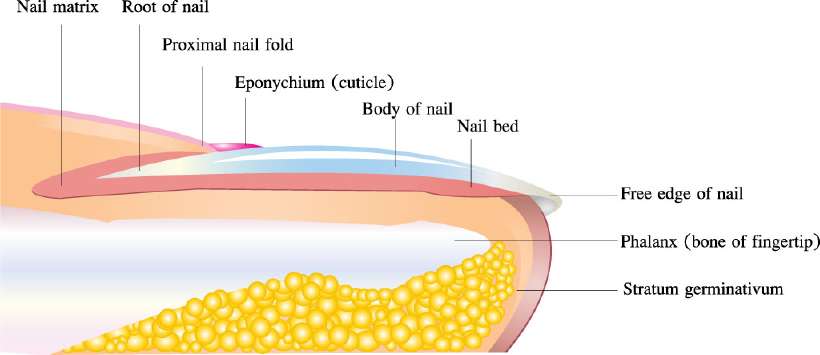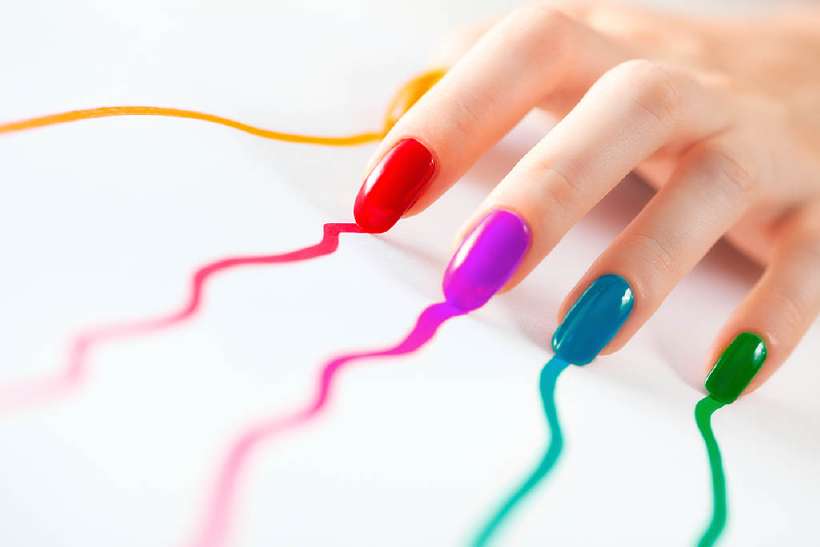Put your hands face down and look at the fingernails on your hand. Are they long or short? Dirty? Covered with polish? And the nails on your toes? Are they tearing up your socks? When my nails do that to my socks I know that it is time to get hold of a nail trimmer to cut them down to size.
Meanwhile, my sister wants to show hers off. So she spends hours every day polishing her nails endlessly. She wants to look different. But whatever people do to their nails – paint them, cut them, grow or colour them – yours, hers, mine and everybody else’s nails are made of the same material called keratin.
Keratin is the same protein that makes up hair and the outer layer of the skin. Nails look as if they grow only from the tips of the fingers or toes and this is the portion, which we cut or trim.
But in fact, nails start growing from the nail bed, a small surface that is just below where your nail disappears into your fingers or toes. Like hair, nails, too, are attached to tiny blood vessels that feed it.

The blood gives the nail the pale pink colour and when you press the flesh of your fingertip, you can see the nail becoming pinker and pinker as blood rushes in below it.
Nail cells multiply under the skin. Each cell keeps dividing and creating more cells. The new cells push the old cells above the skin surface.
Once the nail cells are out on the surface, they are pushed from below by new nail cells, towards your finger or toe. However, once they come out they lose the ability to multiply. They become dead cells.
Nails grow very slowly – and fingernails grow faster than toenails. The root of the nail where it appears on your skin is called the cuticle. Cuticles help to protect the new formed nail and the nail bed. At the tip where the nail comes out of the skin is a whiter half-moon shaped structure called the lunula.
Nails protect the fingertips and toes and help you grab things.

They need to be trimmed weekly. When you play or scratch, tiny particles of dust and dirt get under the nail and skin. This may mix with your food if you do not clean your hands properly, and cause diseases.
Biting or chewing nails is a common habit, but it could lead to an infection. Sometimes people are forced to work with paints, chemicals, or oil. They should be careful as chemicals weaken the nails.
Similarly, the nail polish removers that are commonly used can also weaken the nails, so one must always be careful when using them.
When trimming nails, one must be careful to trim it straight. If nails are cut in a curve, the edges tend to poke through the skin and flesh. This causes a painful condition especially in toes called in-grown nails. When this happens surgery may be necessary to help ease the pain.
Nails normally get broken off if grown over a certain length. However, the record in nail growth is held by an Indian from Pune, called Shridhar Chillal. The nails of his left hand measure a total of 242 inches.
Chillal’s thumb nails are the longest at 56 inches! He hasn’t cut his nails since 1952 and takes great care to see that they remain unbroken.
587 words |
5 minutes
Readability:
Grade 5 (10-11 year old children)
Based on Flesch–Kincaid readability scores
Filed under: 5ws and h
Tags: #fingers, #socks, #anatomy
You may also be interested in these:
The Magnetic Knife
From Cave Drawings to Floor Drawings
Can Frog Fly?
Finger Puppet
Make your own Cards